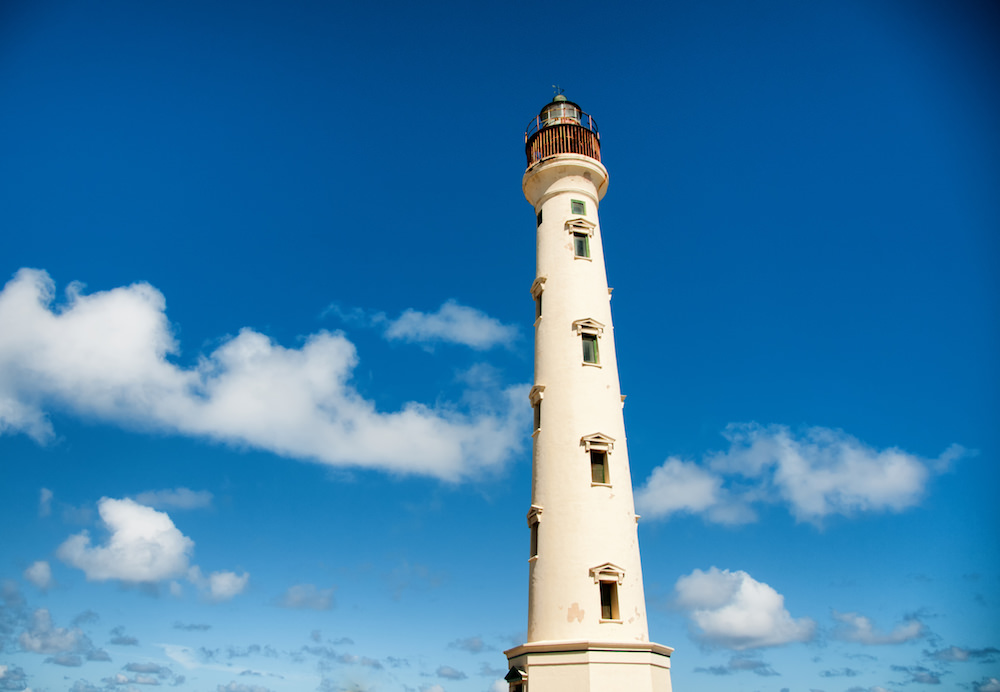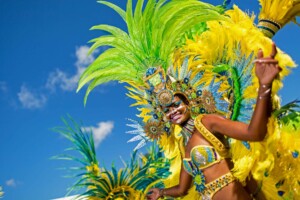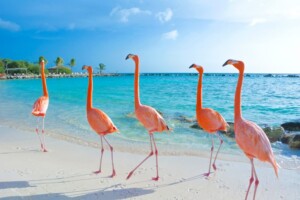Between 1914 and 1916, a large complex was built on the Hudishibana limestone plateau on West Point. It included a lighthouse, a lighthouse keeper’s residence, and an impressive flight of steps leading to the plateau. Craftsmen from the Netherlands and Curacao oversaw its construction, and a number of them are named: Cola de Bruyn (carpenter), Cola van Leeuwen (bricklayer), and Victor Wawoe (bricklayer).
The lighthouse is one of Aruba’s main landmarks. It is about 30 meters tall and mostly built of crushed stone, limestone, and cement. The steel construction for the faroline lamp, mirrors, and so forth was another 7.5 meters high. In the shaft, a wooden staircase spirals around a hollow American pinewood pole with metal rings.
The gas lamp was ordered in France, but the First World War meant it took a long time before it was delivered. Once installed, the light signaled six times a minute – every ten seconds. The rotation mechanism for the light beam was highly ingenious. Over the course of the night, a weight descended from the lantern room to ground level. It descended inside the hollow staircase pole, much like a clock weight. In the morning, the lighthouse-keeper pulled it up again. Around 1970, the lighthouse was equipped with electric lights and an automated mechanism. The lighthouse keepers worked in weekly shifts. They took turns to live in the double staff residence. It must have been quiet and lonely – there were no houses for miles around. Some Arubans claim the place is (or was) haunted. The staff residence is now part of the restaurant built alongside.
The building was named after the West India and Pacific Steamship Company ship that struck a rock here. The goods that washed ashore – canned food, clothing, and furniture – were sold at bargain prices. For years afterward, school children were still seen wearing the so-called ‘drowned goods’.




